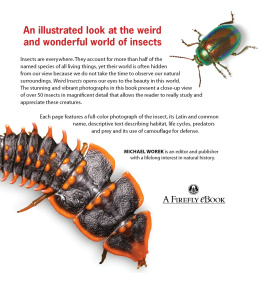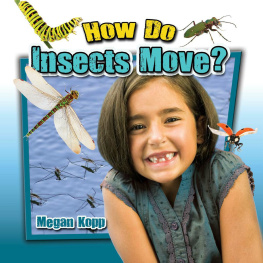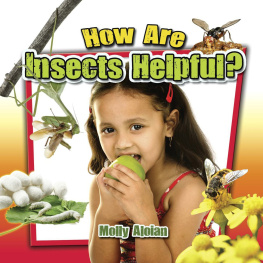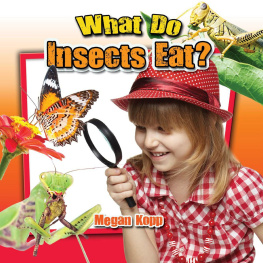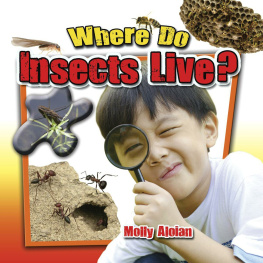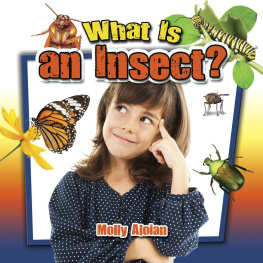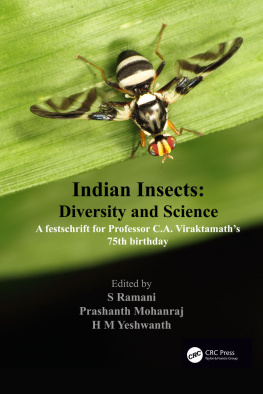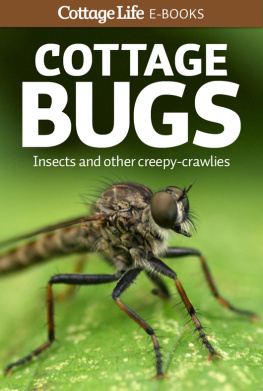WHAT IS THAT CREATURE HIDING IN YOUR BASEMENT?
What kind of insect would make its home in a pile of dung? Does a female praying mantis eat her mate? Do house flies spit on your food? Author Margaret J. Anderson answers all of these questions in Bugged-Out Insects as she explores the weird behavior, habits, and characteristics of insects. There are millions of different kinds of insects in the world, and many of them do things so bizarre you'll have to read it to believe it!
About the Author
Margaret J. Anderson is the author of several books about science for young people, including Isaac Newton: The Greatest Scientist of All Time, Revised Edition for Enslow Publishers, Inc.

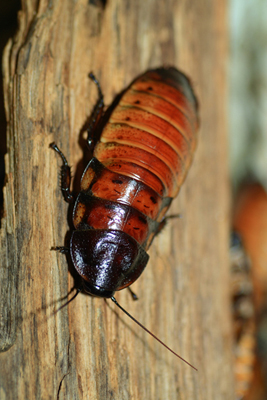
Image Credit: Shutterstock.com
A hissing cockroach. This kind of insect has been around for millions of years.
The weird creature moved about easily in the darkness. It returned to the place where it had found the body yesterday and began to eat. Its heavy jaws moved sideways. Its flat body was completely encased in armor. The warm, damp basement was filled with its musty smell.
A sudden bright light startled the creature. It raised its smooth face. The light dazzled its hundred eyes, but it had nothing to fear. It was a survivor. Its kind had been around for millions of years. Then a huge hand reached down and snatched its meal away by the tail. With a whir of noise, the creature spread its wings and flew into the darkness. It clung to the wall where it had landed. The beam of light found it again, and it scuttled away. Turning sideways, it slipped into an impossibly narrow crack in the wall.
What do you think the creature was?
Something in a horror movie.
An alien from outer space.
An animal left over from the age of the dinosaurs.
A cockroach.
All of the above.
If you picked all of the above, you are right!
Insects often give scriptwriters ideas for horror movies. They give science-fiction writers ideas for invading aliens. Insects are really weird creatures. Insects are usually very small, and, because of this, much of their weirdness goes unnoticed. Although they may be small, they are the most common animal on Earth. Insects outweigh humans by three hundred to one. For every pound of human flesh in the world, there are three hundred pounds of insects.
Insects have been around for a long time. Take the cockroach, for example. Cockroaches have hardly changed in the last 200 million years. Even before the age of the dinosaurs, they crawled through the warm, damp, prehistoric forests. Now they roam around dark basements. They werent choosy about what they ate back then; and they arent choosy about what they eat today.
For its size, an insect is incredibly strong. The tough outer skin of an insect is called an exoskeleton, which means skeleton on the outside. An insects strength comes from having its muscles joined to large areas of the exoskeleton. If you could jump like a grasshopper, you would be able to clear a football field in one leap. An ant can carry a load four times its own weight in its jaws. Thats like you picking up a three- or four-hundred-pound weight with your teeth.

Image Credit: Shutterstock.com
This leaf cutter ant carries part of a leaf back to its home. An ant can carry a very heavy load in its jawsfour times its own weight.
An insects exoskeleton is a bit like the armor worn by knights back in the fifteenth century. Of course, a knights muscles were not attached to his armor, so he had trouble getting around. He even had to be lifted onto his horse. Armor was very hot and uncomfortable to wear. Even on a cold day, the knight was soaked in sweat. He had a hard time breathing when his visor was down.
An insect doesnt have a perspiration problem. It is cold blooded. Its body temperature goes up and down with the temperature of its surroundings. It doesnt have a breathing problem, although it has neither a nose nor lungs. Instead it has spiracles, or air holes, along the sides of its body that lead to breathing tubes.
An exoskeleton has a lot of advantages when it comes to strength and safety. However, it has one big disadvantage. It cannot grow. Our inside skeletons add more bone and grow along with us. That doesnt work if your skeleton is on the outside.
So how does an insect get bigger? It has to molt or shed its hard skeleton. It molts anywhere from three to twenty times during its life, depending on the kind of insect. Underneath the old skin is a new, soft skin that lets the insects body expand. The new exoskeleton slowly hardens. This is a high-risk time for the insect. While the exoskeleton is still soft, the insect cannot fly or run away from its enemies. Until the new skin is hard, it cannot support much weight. This limits the size to which an insect can grow.
The exoskeleton completely covers the insect. It covers its antennae, or feelers, and lines its breathing tubes. The exoskeleton even covers its eyes.

Image Credit: Peter Arnold Images / Photolibrary
This cicada emerges from its nymph, or immature, exoskeleton. This happens for an insect during molting.
Insects see a different world than we do. Thats not just because they are small; its because of their strange eyes. Because each eye has hundreds of lenses, insects dont see details. However, their eyes are great for detecting movement. Thats why its so hard to swat a fly.
Sometimes big changes happen between one molt and the next. A butterfly, for example, starts out as an egg. Then it becomes a caterpillar; then a chrysalis; and finally an adult butterfly. This way of growing is called metamorphosis, which means change of shape. Some insects, such as grasshoppers, go through incomplete metamorphosis. Young grasshoppers look like their parents, but they are smaller and dont have wings.
Insects often behave in weird ways. Female praying mantises have been known to eat their mates. A hungry mother insect sometimes gobbles up her own children. This is usually a case of mistaken identity, however. Those hundred eyes are not good for recognizing faces, and theres an added problem when the kids dont look like their parents.
Some insects go to a lot of trouble to make life easy for the next generation. One kind of small wasp makes sure her little grubs dont go hungry by laying her eggs inside fat caterpillars. When the wasp eggs hatch, the grubs are surrounded by their favorite foodcaterpillar guts! A grub is careful not to be too greedy. It likes its food fresh, so it doesnt kill off its host right away. It just nibbles the caterpillars insides, while the caterpillar is nibbling leaves. The caterpillar spins a cocoon, but what finally comes out is not a colorful butterfly. By this time, the caterpillar has been devoured, and a small wasp emerges.
It takes a lot of food to satisfy the trillions of insects that share our world. When an insect lives on our food, we call it a bad insect. We dont like finding a grub in an ear of our corn. An insect that destroys the grub that eats our food, we call a good insect. Insect parasites, such as the wasp that grows up inside a caterpillar, are good. (A parasite is an animal that gets its food and a place to live inside another animal.) Insect predators, or meat eaters, are also good when their prey is pest insects. Insect parasites and predators are on our side in the struggle to keep ahead of the plant eaters. Insects that pollinate flowers are also good insects. Without them, we would not have most kinds of fruits and vegetables.


